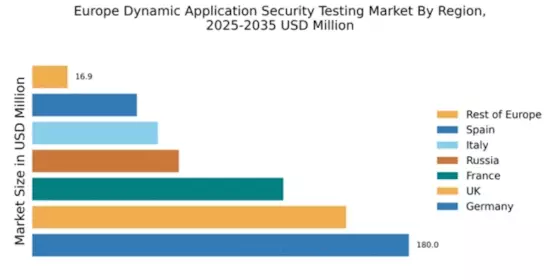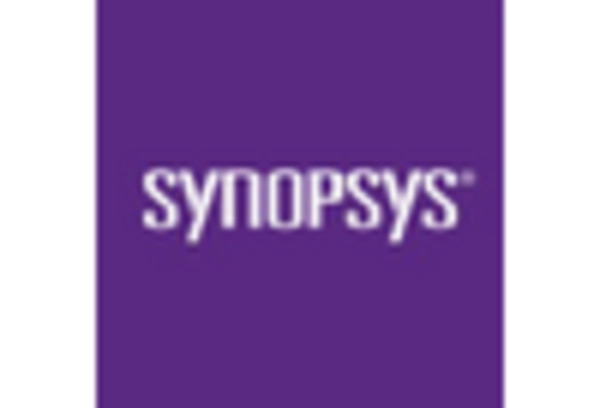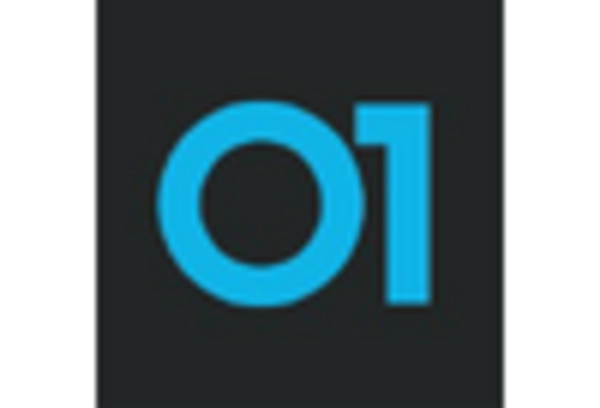Rising Cybersecurity Threats
The Dynamic Application Security Testing Market in Europe is experiencing growth due to the increasing frequency and sophistication of cyber threats. Organizations are compelled to adopt robust security measures to protect sensitive data and maintain customer trust. In 2025, it is estimated that cybercrime will cost businesses globally over $10 trillion annually, prompting European companies to invest heavily in security solutions. This trend indicates a heightened awareness of vulnerabilities in applications, leading to a surge in demand for dynamic application security testing tools. As businesses strive to mitigate risks, the dynamic application-security-testing market is likely to expand, driven by the necessity for proactive security measures.
Increased Regulatory Pressures
The Dynamic Application Security Testing Market in Europe is being shaped by stringent regulatory requirements aimed at protecting consumer data. Regulations such as the General Data Protection Regulation (GDPR) impose heavy fines for non-compliance, compelling organizations to prioritize security measures. In 2025, it is anticipated that compliance-related expenditures will account for approximately 15% of IT budgets in Europe. This regulatory landscape drives the adoption of dynamic application security testing tools, as organizations seek to ensure compliance and avoid costly penalties. The need for continuous monitoring and testing of applications to meet these regulations is likely to bolster the market for dynamic application security testing solutions.
Shift Towards Agile Development
The Dynamic Application Security Testing Market in Europe is significantly influenced by the shift towards agile development methodologies. Agile practices emphasize rapid development cycles and continuous integration, which necessitate the integration of security testing throughout the software development lifecycle. As organizations adopt agile frameworks, the demand for dynamic application security testing tools is expected to rise. In 2025, it is projected that the agile software development market will grow at a CAGR of 20%, further driving the need for security solutions that can keep pace with fast development cycles. This trend suggests that companies are increasingly recognizing the importance of embedding security within their agile processes.
Growing Awareness of Data Privacy
The Dynamic Application Security Testing Market in Europe is benefiting from a growing awareness of data privacy among consumers and businesses alike. As data breaches become more prevalent, customers are increasingly concerned about how their personal information is handled. This heightened awareness is prompting organizations to implement more rigorous security measures, including dynamic application security testing. In 2025, it is estimated that 70% of European consumers will prioritize data privacy when choosing service providers. Consequently, businesses are investing in security solutions to enhance their reputation and build customer trust, thereby driving growth in the dynamic application-security-testing market.
Technological Advancements in Security Tools
The Dynamic Application Security Testing Market in Europe is being propelled by rapid technological advancements in security tools. Innovations such as artificial intelligence and machine learning are enhancing the capabilities of dynamic application security testing solutions, allowing for more efficient and effective threat detection. In 2025, the market for AI-driven security solutions is projected to reach €30 billion, indicating a strong trend towards automation and intelligence in security testing. These advancements enable organizations to identify vulnerabilities in real-time, thereby reducing the risk of exploitation. As technology continues to evolve, the dynamic application-security-testing market is likely to see increased adoption of these advanced tools.


















Leave a Comment